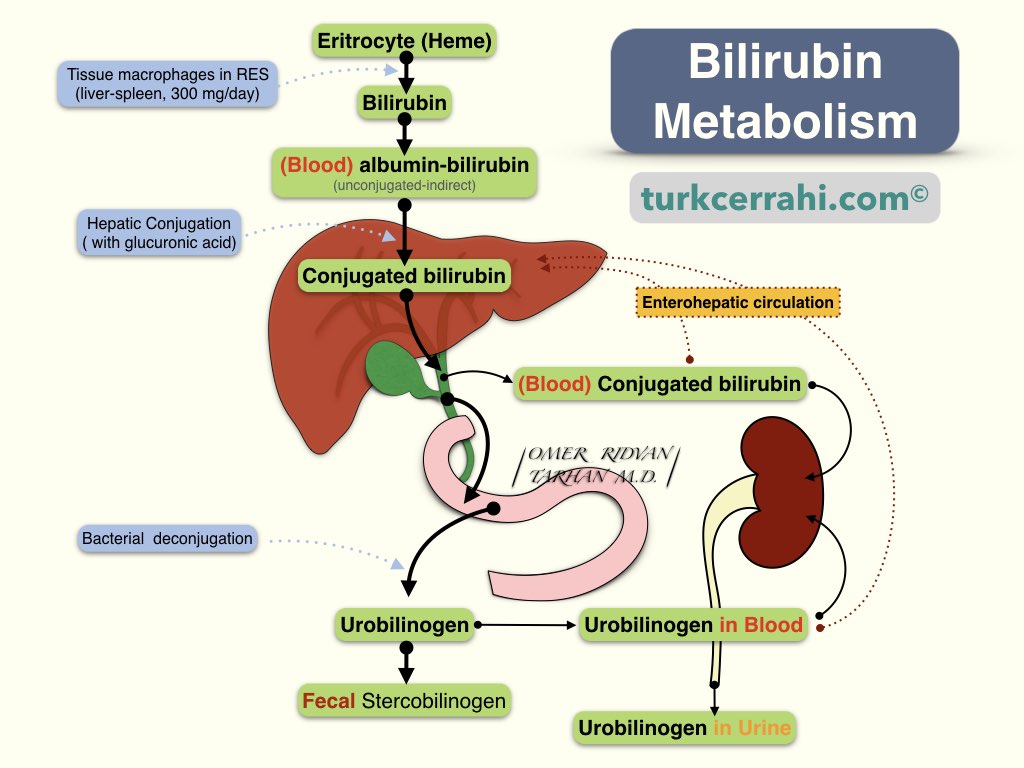Bilirubin
Bilirubin is a dark yellow pigment that gives bile its color. It is produced through the breakdown (degradation) of the organic molecule called heme (haem). Heme is a component of the oxygen-carrying protein known as hemoglobin, which is present in red blood cells. Each molecule of hemoglobin consists of four heme groups, each of which contains an iron (Fe) atom that binds to oxygen. Heme is converted into bilirubin during the breakdown of old red blood cells.

Bilirubin is insoluble in water. Therefore, it is bound to albumin, a protein that carries bilirubin to the liver. In the liver, bilirubin is conjugated with glucuronic acid to make it water soluble (conjugated bilirubin). Approximately 99% of bilirubin is excreted in the feces, which also gives feces their brown color. The remaining 1% is reabsorbed and excreted in the urine, which causes the urine to be yellow.
Bilirubin does not have a function in the body. In some diseases, such as liver and blood disorders, the level of bilirubin in the blood rises, resulting in jaundice (icterus). High levels of bilirubin in adults cause yellowing of the sclera (subicterus), followed by yellowing of the skin (icterus) and itching. High bilirubin levels in children can cause brain damage above a certain threshold.
Total bilirubin (normal range: 0.3-1.2 mg/dL) and direct bilirubin (normal range: 0-0.2 mg/dL) are measured in laboratories, and the difference is calculated as indirect bilirubin.
« Return to Dictionary